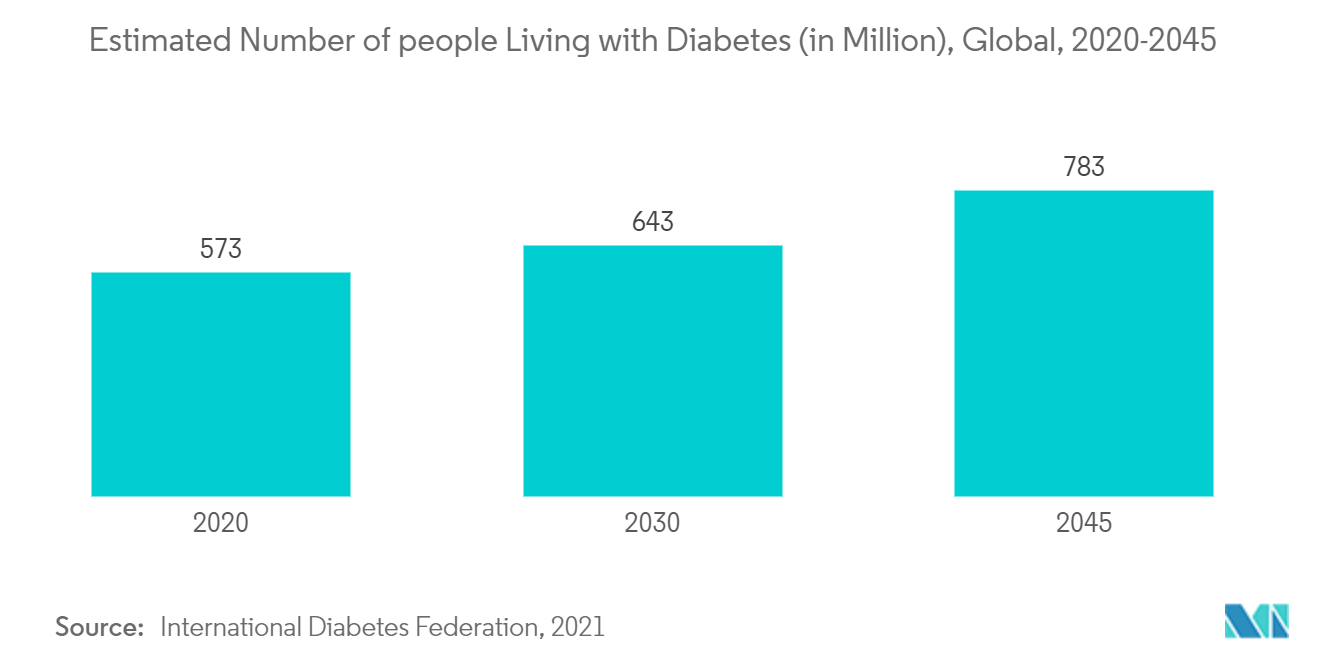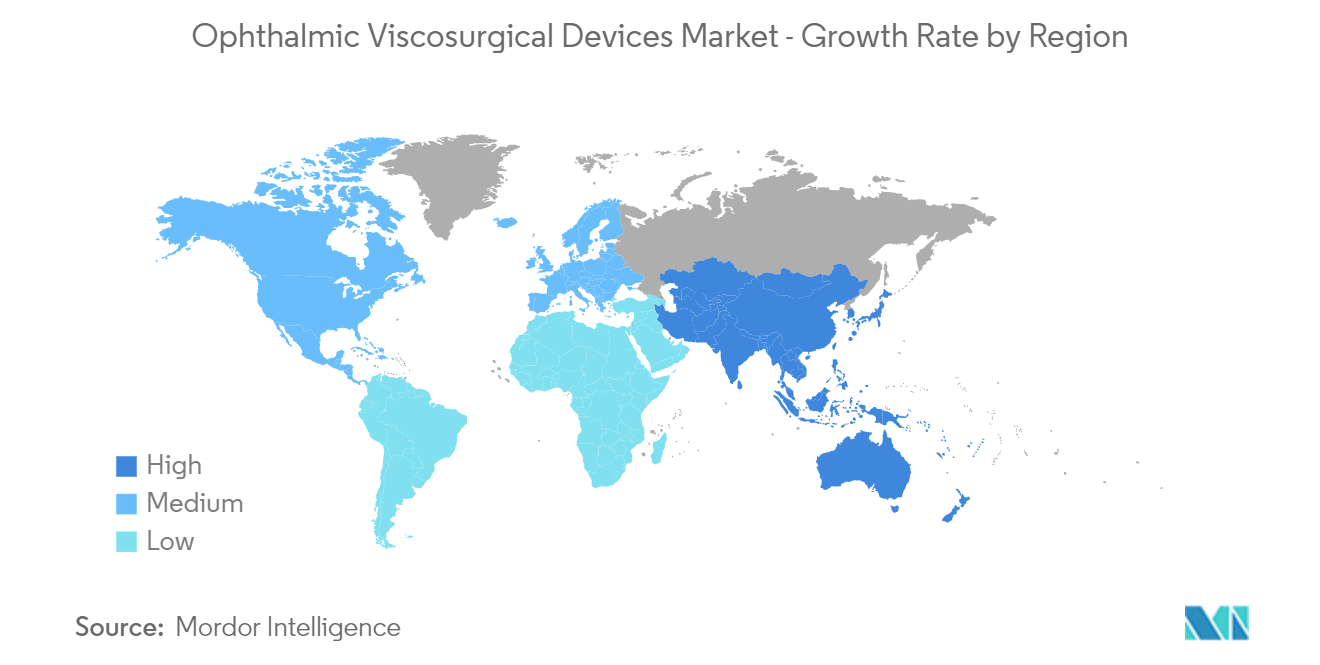Market Trends of Ophthalmic Viscosurgical Devices Industry
This section covers the major market trends shaping the Ophthalmic Viscosurgical Devices Market according to our research experts:
Cataract Surgery Segment is Estimated to Witness Healthy Growth
The significant factors expected to drive growth in the cataract surgery segment are the increasing prevalence of cataracts and the growing geriatric population globally. For instance, according to the research study published in Sage Journal in January 2021, there were between 3,000 and 10,000 new cases per million inhabitants in East Africa in 2020. With more than 0. 5 million cases of blindness and 1. 2 million cases of severe visual impairment, cataract was the primary reason for preventable blindness and impaired vision in Ethiopia. A cataract is the second-leading cause of impaired vision in persons of all ages, accounting for 50% of all cases of blindness and 33% of all cases of low vision globally, which shows an increase in cataract and cataract-related illnesses globally. Thus, the demand for cataract surgery devices for treatment is increasing, fueling growth in the segments.
Moreover, a growing number of cataract surgeries is expected to drive the demand for the viscosurgical devices market over the forecast period. According to the Organization for Economic Co-operation and Development (OECD), in 2022, cataract surgeries in Ireland climbed to 25,942 in 2020, and cataract procedures in Israel increased to 71,920 in 2020. Furthermore, the number of cataract procedures conducted in Korea increased to 702,621 in 2020. Thus, rising cataract surgeries are expected to drive the demand in the viscosurgical devices market, thereby boosting segment growth.
Furthermore, product launch by the key market players further expands the market throughout the forecast period. For instance, in April 2021, Bausch + Lomb reported that the United States Food and Drug Administration (FDA) approved ClearVisc dispersive ophthalmic viscosurgical device (OVD) for use in ophthalmic surgery.
Thus, all the above factors are expected to boost market growth over the forecast period.

North America is Expected to Hold a Significant Share in the Market during the Forecast Period
North America is expected to hold a significant market share in the global ophthalmic viscosurgical devices market due to the increasing aging population, improved access to ophthalmic care facilities, increasing healthcare expenditure, and well-established healthcare infrastructure. According to the Centers for Disease Control and Prevention 2021, about 30.1 million people were affected by cataracts in the United States in 2020. Additionally, per data published by the Centers for Disease Control and Prevention in 2020, around 8.96 million Americans will suffer from uncorrectable vision impairment by 2050 due to the increasing epidemics of diabetes and other chronic diseases in the United States. Thus, increasing the prevalence of ophthalmic diseases is expected to boost market growth over the forecast period.
Additionally, a senior population that is more prone the ophthalmic diseases is expected to support the market expansion. According to Statistics Canada, in April 2022, 7 million people, or 19.0% of the population, in Canada were 65 years or older in 2021. The number of seniors 65 and over doubles every six years compared to children ages 0 to 14. Thus, rising in the geriatric population is expected to boost the market growth over the forecast period.
Moreover, various organic and inorganic strategies adopted by the market players are likely to support the market's growth. For instance, in August 2022, Glaukos Corporation received 510(k) clearance from the United States Food and Drug Administration (FDA) for the iStent infinite. It is a trabecular micro-bypass system indicated for use in a standalone procedure to reduce elevated intraocular pressure (IOP) in patients with primary open-angle glaucoma uncontrolled by prior medical and surgical therapy.
Thus, all the above factors are expected to boost market growth over the forecast period.


